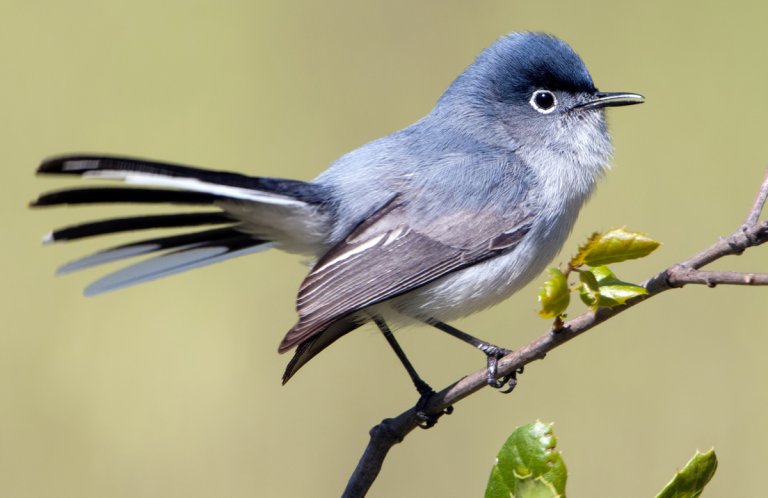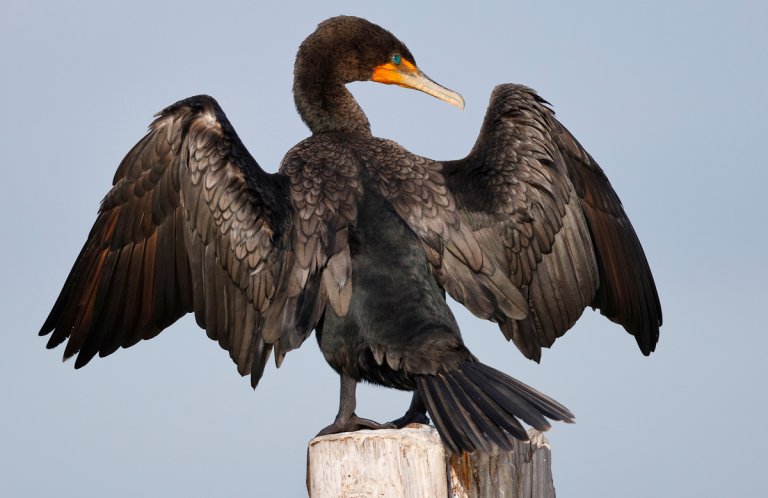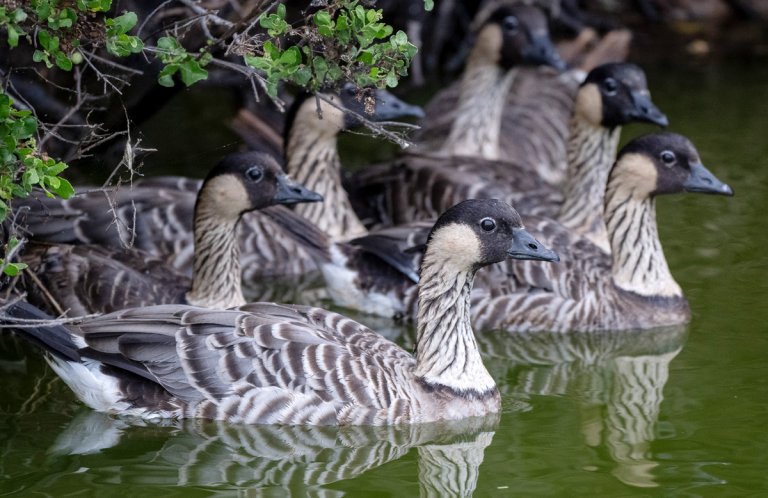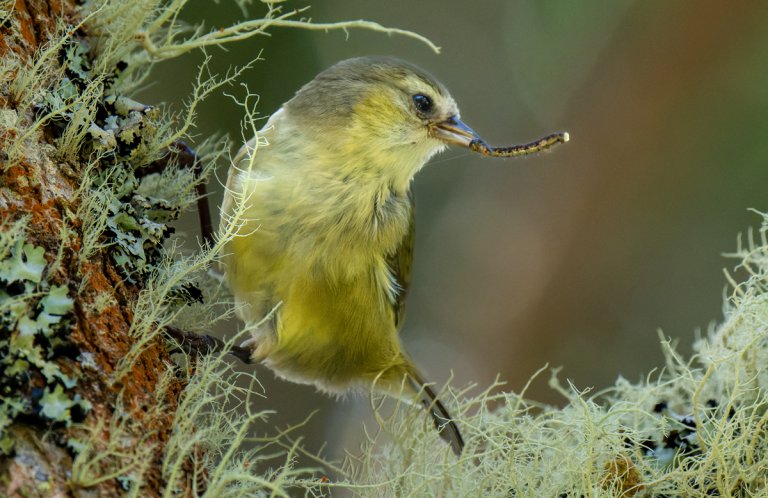
Black-capped Vireo range map by ABC
Active yet secretive, the Black-capped Vireo is the smallest vireo found in the United States, reaching only about the size of a Black-capped Chickadee. It shares its species name atricapilla (meaning dark cap or hair) with the chickadee as well.
The Black-capped Vireo is also one of North America's least common and most threatened vireos. Like the Kirtland's Warbler, its recovery depends upon human intervention in the form of prescribed fire and cowbird control efforts.
Vireo of a Different Color
The Black-capped Vireo is the only vireo that is sexually dimorphic, meaning the male and female have distinct appearances. Males have a jet-black head with bold white spectacles encircling a vivid red eye, while the heads of females and juveniles are dark gray. Unlike other vireos, it takes two years for male Black-capped Vireos to attain complete breeding plumage.
This vireo has the smallest range of any vireo species nesting in the U.S., with this qualifier: Both the Black-whiskered and the Yellow-green Vireo (a rare nester in the U.S.) occur in smaller areas within the country, but their ranges outside the U.S. are larger.
Historically, the Black-capped Vireo bred as far north as Kansas, but its range has contracted due to habitat loss. It now breeds solely in a patch of Oklahoma and a crescent-shaped wedge extending from central Texas down to northern Mexico. The Black-capped Vireo is migratory, moving to thorn-scrub habitats in western Mexico for the winter.
Multisyllabic Musician
Male Black-capped Vireos are tireless singers during the breeding season, and can be heard vocalizing even in the midday heat, or while feeding. (Given the family's tendency to sing much of the day, perhaps it's not surprising a group of vireos is called a “call.”)
The Black-capped Vireo's persistent, bubbly song is characterized by two- or three-note phrases punctuated by short pauses — recalling somewhat the song of a Gray Catbird. The Black-capped Vireo has a larger repertoire of syllables than is heard in other vireos, and its songs often vary from bird to bird.
Listen here:
(Audio: Paul Marvin, XC160976. Accessible at www.xeno-canto.org/160976)
Shelter in the Shinnery
A nesting Black-capped Vireo is seldom found far from a "shinnery," a thick tangle of scrubby oak and sumac where thick vegetation reaches all the way to the ground. These dense thickets interspersed with small openings are characteristic of recently burned areas of rocky habitat.
Each spring, returning males stake a claim of 2 to 4 acres of prime shinnery habitat, often returning to the same area in subsequent years. Newly arriving females quickly choose a mate, and both birds begin work on their nest, a pouch of leaves, bark, and spider webs that hangs down from the “Y” of a branch, attached at its top edge with additional webs.
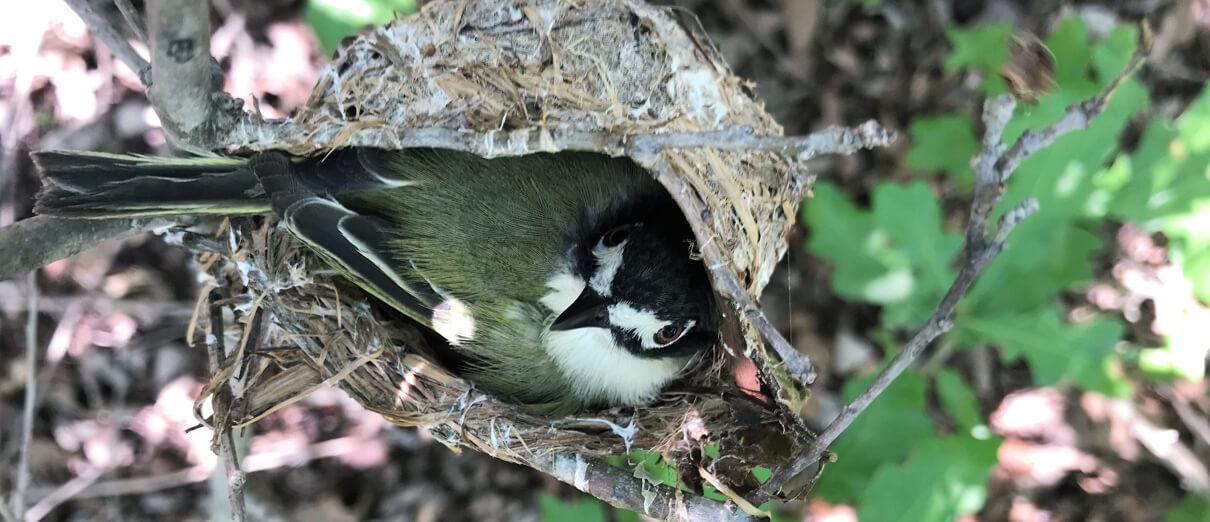
Black-capped Vireo on nest by Jim Giocomo
Most nests are built in the thickest, thorniest cover, only about 1 to 5 feet above the ground. Both male and female incubate the clutch of three to five eggs and feed the hatchlings. Newly fledged vireos remain near the nest, calling to their parents to beg for food. Most Black-capped Vireo pairs raise one brood of chicks per year, although a small percentage may rear two.
A Six-legged Feast
Like other vireos, the Black-capped Vireo consumes primarily insects and their larvae, gleaning prey from the foliage with a hook-tipped bill. Males appear to feed higher in the dense foliage than do females, and this species rarely descends to the ground. It can sometimes be spotted feeding upside down like a Tufted Titmouse or Golden-crowned Kinglet. During the winter, the Black-capped Vireo adds small fruits and seeds to its diet.
Recent Rebounds
Habitat loss (particularly due to overgrazing), fire suppression, and cowbird parasitism all contributed to the Black-capped Vireo's steep decline, and the species was federally listed as Endangered in 1987. Cowbird management and prescribed burns on public lands within this species' breeding range have led to local population increases at Balcones Canyonlands National Wildlife Refuge, Fort Hood, and Kerr Wildlife Management Area in Texas. Due to this steady recovery, the species was removed from the endangered species list in 2018.
On private lands, Black-capped Vireo conservation has been encouraged through programs including the ABC-led Oaks and Prairies Joint Venture's Grassland Restoration Incentive Program (GRIP).
ABC is also working to preserve the Mexican thorn scrub region that serves as winter habitat for the Black-capped Vireo, as well as the Elf Owl, Rufous Hummingbird, and Painted Bunting, through its Migratory Birds initiative, which aims to protect birds throughout their full life-cycles.
Donate to support ABC's conservation mission!






































